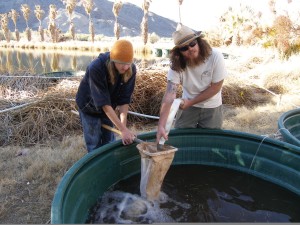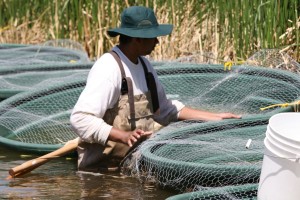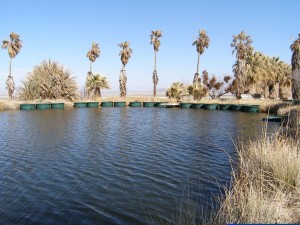Physio-chemical water analysis can be done many different ways. Water can be collected and sent off to a laboratory, or you can collect the data with hand held probes. If you require a more in-depth analysis it’s always a good idea to have it sent to a lab that specializes in water quality analysis, but if you are only doing a comparative study, it doesn’t make sense to spend all the money getting a professional lab to analyse the water quality.
While I was attending Minnesota State University: Moorhead (MSUM), we used may hand held probes on our assignments and student projects. We did a study on crayfish looking for preferred substrate size, and while doing that we recorded some simple water measurements such as: temperature, turbidity, and dissolved oxygen.
When working the life history study of the Mohave Tui Chub, we took many more readings. Temperature was taken on several sites due to the varying depth of the water. We wanted to make sure that the temperature did not interfere with the interaction between the chub and the mosquito fish. We also sampled dissolved oxygen, salinity, pH, and turbidity. Most of the measurements were made using a handheld probe. Some of the probes were multi functional, but some were uni-taskers. We took recordings several times per week at multiple points in the lake and ponds.
We also collected water samples in glass vials and delivered them to a professional water analysis laboratory in Los Angeles.





